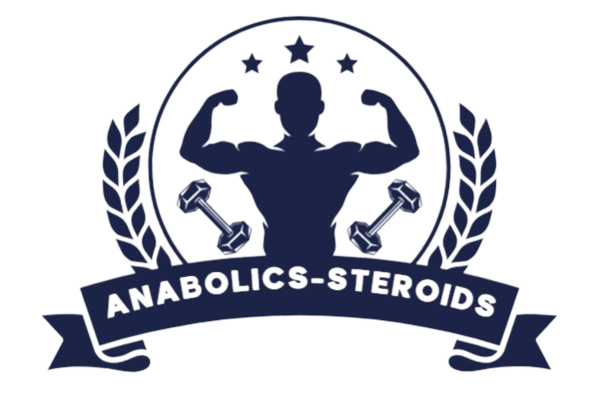Staufenbiel, S. M. et al. Hair cortisol, stress exposure, and mental health in humans: A systematic review. Psychoneuroendocrinology 38, 1220–1235 (2013).
Marcil, M. J. et al. Hair cortisol change at COVID-19 pandemic onset predicts burnout among health personnel. Psychoneuroendocrinology 138, 105645 (2022).
Loussouarn, G., el Rawadi, C. & Genain, G. Diversity of hair growth profiles. Int. J. Dermatol. 44, 6–9 (2005).
LeBeau, M. A., Montgomery, M. A. & Brewer, J. D. The role of variations in growth rate and sample collection on interpreting results of segmental analyses of hair. Forensic Sci. Int. 210, 110–116 (2011).
Kirschbaum, C. et al. Hair as a retrospective calendar of cortisol production-increased cortisol incorporation into hair in the third trimester of pregnancy. Psychoneuroendocrinology 34, 32–37 (2009).
Manenschijn, L. et al. Evaluation of a method to measure long term cortisol levels. Steroids 76, 1032–1036 (2011).
Dettenborn, L. et al. The assessment of cortisol in human hair: Associations with sociodemographic variables and potential confounders. Stress 15, 578–588 (2012).
Grass, J. et al. In vitro influence of light radiation on hair steroid concentrations. Psychoneuroendocrinology 73, 109–116 (2016).
Fischer, S. et al. Sociodemographic, lifestyle, and psychosocial determinants of hair cortisol in a South London community sample. Psychoneuroendocrinology 76, 144–153 (2017).
Gaudl, A. et al. Liquid chromatography quadrupole linear ion trap mass spectrometry for quantitative steroid hormone analysis in plasma, urine, saliva and hair. J. Chromatogr. A 1464, 64–71 (2016).
Walther, A. et al. Depressive symptoms are not associated with long-term integrated testosterone concentrations in hair. World J. Biol. Psychiatry 22, 288–300 (2021).
Voegel, C. D. et al. Endogenous steroid hormones in hair: Investigations on different hair types, pigmentation effects and correlation to nails. Steroids 154, 108547 (2020).
Slezak, J. K., Ström, J. O. & Theodorsson, E. Testosterone-like immunoreactivity in hair measured in minute sample amounts-a competitive radioimmunoassay with an adequate limit of detection. Sci. Rep. 7, 17636 (2017).
Lundin, C. et al. Sexual function and combined oral contraceptives: A randomized placebo-controlled trial. Endocr. Connect 7, 1208–1216 (2018).
Pötsch, L. A discourse on human hair fibers and reflections on the conservation of drug molecules. Int. J. Leg. Med. 108, 285–293 (1996).
Goldstein, H. & Healy, M. J. R. The graphical presentation of a collection of means. J. R. Statist. Soc. A 158, 175 (1995).
Wang, W. et al. Assay validation of hair androgens across the menstrual cycle. Psychoneuroendocrinology 101, 175–181 (2019).
Zouboulis, C. C. et al. Sexual hormones in human skin. Horm. Metab. Res. 39, 85–95 (2007).
Otten, W. et al. The age of hair matters – the incorporation of cortisol by external contamination is enhanced in distal hair segments of pigs and cattle. Animal 16, 100495 (2022).
Dario, M. F., Baby, A. R. & Velasco, M. V. R. Effects of solar radiation on hair and photoprotection. J. Photochem. Photobiol. B 153, 240–246 (2015).
Richena, M. & Rezende, C. A. Morphological degradation of human hair cuticle due to simulated sunlight irradiation and washing. J. Photochem. Photobiol. B 161, 430–440 (2016).
Robbins, C. Chemical and physical behavior of human hair 4th edn. (Springer-Verlag, 2002).
Cao, Y. et al. A novel method for non-destructive determination of hair photo-induced damage based on multispectral imaging technology. Sci. Rep. 7, 45544 (2017).
Grotzinger, A. D. et al. Hair and salivary testosterone, hair cortisol, and externalizing behaviors in adolescents. Psychol. Sci. 29, 688–699 (2018).
Slominski, A. et al. Steroidogenesis in the skin: implications for local immune functions. J. Steroid Biochem. Mol. Biol. 137, 107–123 (2013).
Sharpley, C. F., Kauter, K. G. & Mcfarlane, J. R. An initial exploration of in vivo hair cortisol responses to a brief pain stressor: Latency, localization and independence effects. Physiol. Res. 58, 757–761 (2009).
Kapoor, A., Schultz-Darken, N. & Ziegler, T. E. Radiolabel validation of cortisol in the hair of rhesus monkeys. Psychoneuroendocrinology 97, 190–195 (2018).
Rippe, R. C. A. et al. Splitting hair for cortisol? Associations of socio-economic status, ethnicity, hair color, gender and other child characteristics with hair cortisol and cortisone. Psychoneuroendocrinology 66, 56–64 (2016).
Staufenbiel, S. M. et al. Determinants of hair cortisol and hair cortisone concentrations in adults. Psychoneuroendocrinology 60, 182–194 (2015).
Binz, T. M. et al. Endogenous cortisol in keratinized matrices: Systematic determination of baseline cortisol levels in hair and the influence of sex, age and hair color. Forensic Sci. Int. 284, 33–38 (2018).
Wosu, A. C. et al. Hair cortisol in relation to sociodemographic and lifestyle characteristics in a multiethnic US sample. Ann. Epidemiol. 25, 90–95 (2015).
Official Statistics of Sweden. Population statistics 2020. Statistics Sweden, 2021.
Hoting, E., Zimmerman, M. & Hilterhaus-Bong, S. Photochemical alterations in human hair. I. Artificial irradiation and investigations of hair proteins. J. Soc. Cosmet. Chem. 46, 85–99 (1995).
Santos Nogueira, A. C. & Joekes, I. Hair color changes and protein damage caused by ultraviolet radiation. J. Photochem. Photobiol. B 74, 109–117 (2004).
Barman, J. M., Pecoraro, V. & Astore, I. Method, technic and computations in the study of the trophic state of the human scalp hair. J. Invest. Dermatol. 42, 421–425 (1964).
Tajima, M. et al. Characteristic features of Japanese women’s hair with aging and with progressing hair loss. J. Dermatol. Sci. 45, 93–103 (2007).
Saitoh, M., Uzuka, M. & Sakamoto, M. Human hair cycle. J. Invest. Dermatol. 54, 65–81 (1970).
Courtois, M. et al. Periodicity in the growth and shedding of hair. Br. J. Dermatol. 134, 47–54 (1996).
Sachs, H. Theoretical limits of the evaluation of drug concentrations in hair due to irregular hair growth. Forensic Sci. Int. 70, 53–61 (1995).



